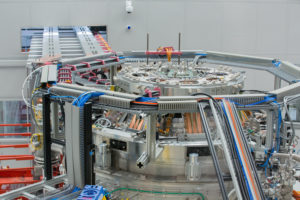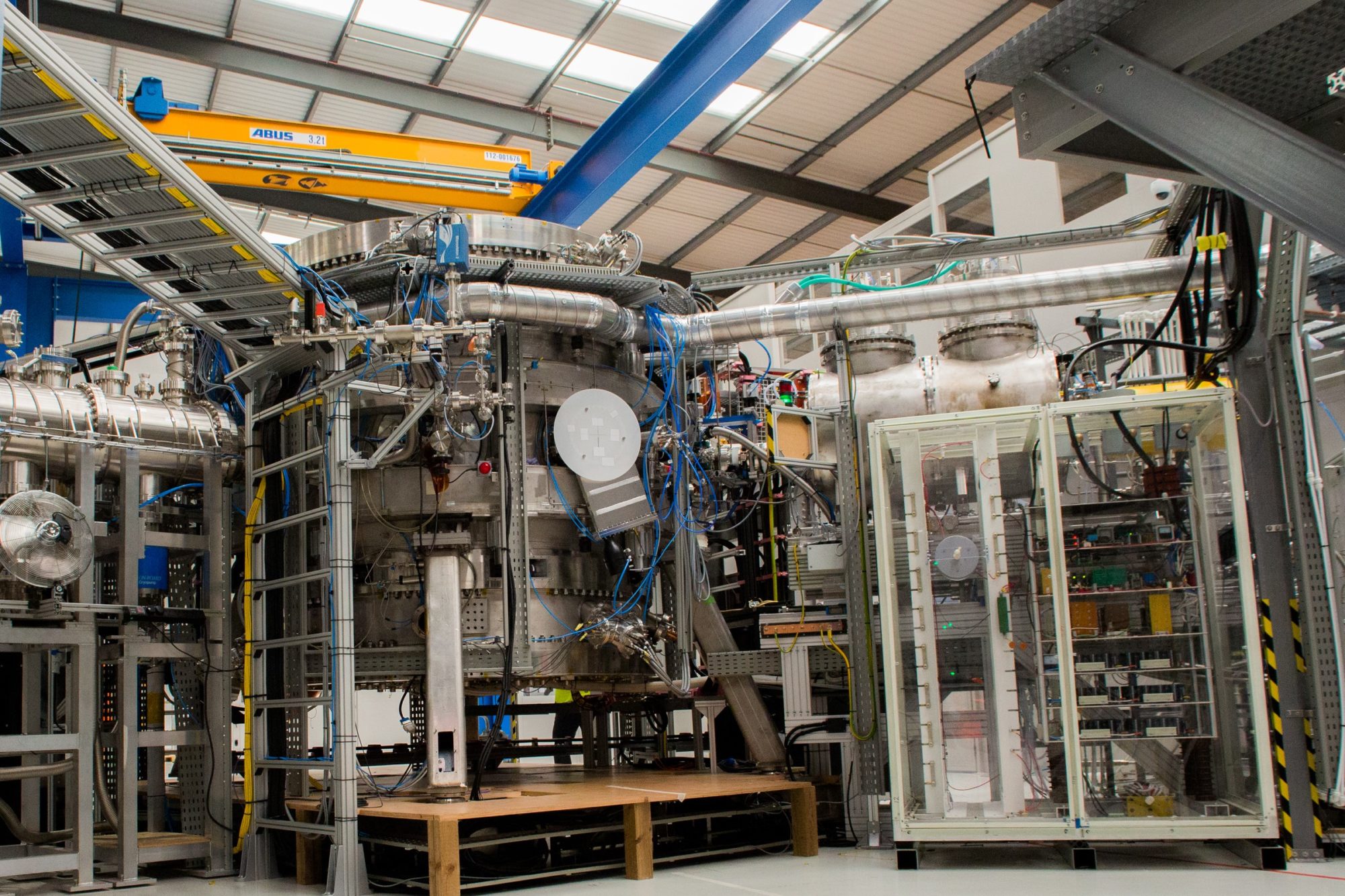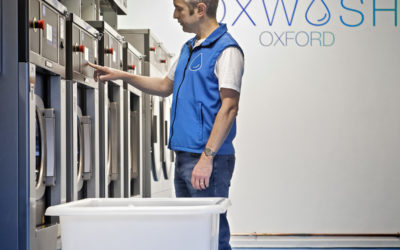Tokamak Energy is pioneering commercial, clean, economic and globally deployable fusion energy in the heart of Oxfordshire
It is hard to think of a clearer symbol of Oxfordshire’s central role in replacing the planet’s reliance on fossil fuels than the development of fusion power. On Milton Park, Tokamak Energy is at the forefront of the development of commercial fusion energy generation – a pioneer in the field, their goal is to develop clean, economic and globally deployable fusion devices. The company, which has grown since they were interviewed for Advanced Oxford’s Powering Up for the Green Recovery report back in the autumn of 2020, now numbers 160 employees and is due to double in size in the next 3 years.
Big conventional tokamaks in Government laboratories have been able to generate plasma temperatures of 100m degrees, but the best spherical tokamaks, the kind being developed by the company, have so far only reached 30m degrees. The goal is for the company’s ST40 spherical tokamak device to reach 100m Celsius, the temperature necessary for controlled fusion energy.
The company’s work is now directed at data generation, control of the device and taking images to prove what they can achieve. This requires further upgrades to the system to maximise magnetic fields, measurement and control systems. The team is drawing on capability at the nearby UKAEA Culham site to help confirm that Tokamak Energy’s measurement systems are robust. The goal is the creation of smaller, more powerful devices with the company on track to have a commercial fusion pilot plant operating in the early 2030s.
While clean energy is the goal, the technology that Tokamak Energy is developing has applications beyond fusion energy generation. The company is creating compact, high temperature, super-conducting magnets that can generate extremely high magnetic fields. The device also requires vacuum systems and cryogenics – Tokamak Energy’s magnets operate at 20 degrees above absolute zero.
A cluster of local capability is emerging drawing on expertise not only at Culham, but also from University of Oxford, RAL at Harwell and local companies like Oxford Instruments, who have been a collaborator throughout. David Kingham, Tokamak Energy’s Executive Vice-Chair explains that these technologies can be used to explore the physics and chemistry of materials. Particle accelerators rely on extreme magnetic fields to accelerate particles – by improving magnet technology, you can open up scientific investigation to new, higher energy particles, so that facilities like CERN can extend the boundaries of their research.
“Spinning out and licensing technology opens the potential for new revenue streams and helps to validate the technology, both from a design and a manufacturing perspective.” says David.
There are also potential applications in space technologies, such as propulsion systems, as well as in health and diagnostics – for example, proton beam therapy for cancer treatments can benefit from systems that direct the proton beam to target the treatment more precisely.
The company recently welcomed Business Secretary, Kwasi Kwarteng, to the site where he was able to see some of the work that has been undertaken following the award of a £10m grant from BEIS Advanced Modular Reactor (AMR) programme. See more about this here

Looking forward, Tokamak Energy is keen to see the UK supply chain develop and wants more opportunities to collaborate with local companies. Currently, the supply chain is a challenge, and they have to source equipment from companies in Spain and Russia to support the company’s requirements. While most of the employees at Tokamak Energy are engineers and physicists, the company is now bringing in people with more commercial skills as they build the supply chain. These same skills will also support the company to exploit their technology both for power generation and for the wide range of other uses to which their expertise in super conducting magnets can be applied.



